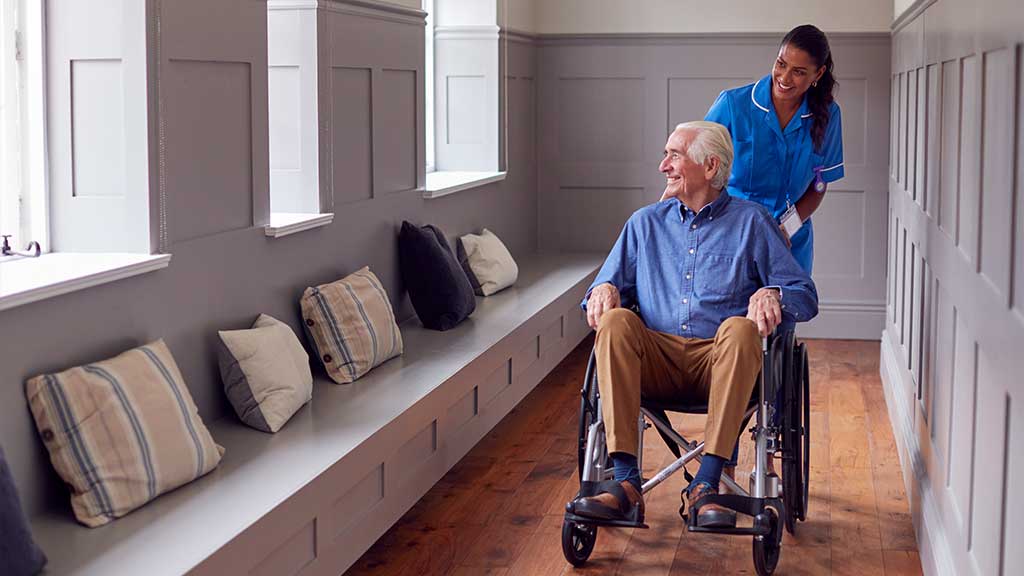It is important to know how to start an assisted living facility because the number of senior citizens is rising and a large number of them are unable to manage their everyday obligations on their own. This change in the population offers a chance for those with the abilities and means to provide these individuals with a more pleasant senior life. But to launch this kind of enterprise, it is important to note that there are state requirements for assisted living facilities that must be followed.
In this article, we will be sharing some steps to make opening your own assisted living residence easier.
Choose your preferred business model
This is a crucial stage since it will assist you in determining which license(s) you’ll need to run your residential assisted living business and who is going to be held legally accountable for the standard of care you deliver. The kind of license you need to get should match the kind of senior living community your company will offer.
License for Residential Assisted Living Facilities
This license stipulates that to provide round-the-clock monitoring and support, a minimum of one employee must be on the property 24 hours a day, seven days a week. If you have over 16 residents or provide nursing facilities on your property, you must provide this caliber of care.
License for Nursing Homes
If you offer 24-hour medical supervision and support, such as medication, you must have a nursing home license, which is one of the assisted living requirements. Only once you fulfill all the prerequisites for a certified assisted living residence and the government certifies that your assisted living conditions are on par with those of a nursing home can you obtain this kind of license. In addition, you need to adhere to certain building requirements and always maintain a minimum staffing level.
Top Guide on How to Start an Assisted Living Facility

Are you considering opening an assisted living home of your own?
Let’s examine the initial steps to help you get going!
Examine the need
Identifying your needs and the solutions that will best satisfy them is one of the first steps in starting an assisted living business. Given the variety of assisted care facilities available that may meet a wide range of needs, this step might be trickier than it seems.
Draft a thorough business plan
A thorough business plan gives you direction and aids in your evaluation of how you’ll reach and sustain profitability.
The following should be addressed in your business plan:
- Who do you want to reach with this?
- What is your plan for rate-setting?
- How much would it cost to get started?
- When can you anticipate turning a profit?
- Which services are you hoping to provide?
- What level of staffing do you need?
Look for dependable financial sources
When starting a new senior living home, financial power is one of the qualifications for assisted living homes. Loans and grants are excellent financial possibilities. Grants are the best because they don’t require repayment as loans do. Grants from the federal and state governments could also be a possibility for starting a business.
Create a legitimate business entity and file your taxes
Establishing a legitimate company structure and filing taxes is crucial. Due to its capacity to shield owners from personal liability in the event of a lawsuit, limited liability companies (LLCs) are a popular form for assisted care facilities. After forming your company, you must register for both federal and state taxes. Ensure that you use the IRS website to get an EIN.
Create a bank account
In addition to protecting your assets, creating a legal entity & opening a commercial bank account facilitates easier financial tracking for your company. Most banks provide business bank accounts, as do nearby credit unions.
Decide on a building site and builder

Usually, you will have to construct the long-term care facility yourself because it is not possible to rent a structure and turn it into a facility. Obtain three quotations from builders, request references, and ideally think about specific features that will make your home stand out. When choosing a site, consider the accessibility of businesses and services that locals could find appealing, such as:
- A fitness for assisted facility living
- Educating spaces such as community centers or nearby colleges
- Medical professionals
- Well-liked eateries
- Retail establishments, or events
Obtain permissions, licenses, and insurance
Your state, as well as your county or city, will determine what licenses, permits, and insurance you require. To obtain a certificate of authorization to conduct business, you will usually need to apply and follow all state laws as well as caregiver rules and regulations.
Establish your brand and market your services
Make sure the words and images in your branding, such as your logo, convey your main principles. Create a website so that prospective tenants can find out more about your enterprise but remember that you also must promote your facility to get more leads from organic search engine traffic. None of these are part of the independent living facility requirements, but they will quickly get your business into the market.
To accomplish that, you can:
- Keep up with social media accounts
- Manage pay-per-click ads
- Create content
- Organize in-person networking events
Make an online training purchase
The availability of online caregiver training is a major advantage for private assisted living homes. It’s inexpensive, practical for you and your group, and gives you the ability to monitor the development of your group. Online training has the potential to increase training completion rates and reduce onboarding times.
Move your marketing online
Marketing and promotion are crucial for new amenities to draw in residents. The use of digital marketing is growing in popularity in the modern world. Creating a strong website, utilizing social media to establish a connection with the public at large, and blogging to offer potential clients pertinent and high-quality material are some of the most successful digital marketing techniques.
Purchasing software for long-term care

A new assisted living residence can also maintain its competitiveness by implementing effective health care plan software that is customized to meet the unique requirements of the assisted living facility. The Service Tracker is an example of an application component created especially for assisted living facilities.
Employ a CRM
You may manage each client’s needs, such as emergency contacts and prescription administration, with the use of CRM software. It may also include branded portal options and sophisticated reporting, in addition to helping with office management tasks like staff scheduling.
Finding and keeping skilled employees
For assisted living homes, finding and hiring suitable employees can be a major difficulty, especially ones that can keep up with the assisted living facility requirements. A lot of competent nurses might work in hospitals or home healthcare settings. Additionally, entry-level positions at retail giants like Target and Amazon occasionally pay more than occupations providing non-medical care.
The Risks of Starting a Business in Assisted Living
It turned out that many proprietors had misunderstood three significant business dangers. Any one of these (or all three) might destroy the potential profits of my venture.
Labor expenses
Labor is the single largest expense for a facility that provides assisted living. To open a house, you would have to pay caregivers all the time. You would have to take care of things overnight, you would be tied to the company, at least in the beginning. A lot of assisted care facilities are family-owned companies. That implies the caregivers rotate among the parents, adult children, and other family members.
Limited range of opportunities
Most seniors are not viable candidates due to the monthly prices of assisted living facilities, which start at $3K. Many elderly people can only afford to stay in assisted living facilities temporarily. As opposed to nursing homes, assisted living facilities typically don’t take Medicaid or other types of government assistance.
Vigorous rivalry

There is fierce rivalry for each person in an assisted living facility due to a tiny pool of potential residents. Usually, a resident’s family views two, five, or even 10 houses before deciding on one. This calls for constant selling, constant “on,” and, ideally, constant closing.
Conclusion
Succeeding in this industry requires a good knowledge of how to start an assisted living facility. As the population ages, an increasing number of people will require support to manage their daily life activities. As included in the residential assisted living requirements, family members preoccupied with their work schedules can’t offer this aid. Additionally, it is unlikely that the family members have the necessary experience managing various illnesses, such as Alzheimer’s.
FAQs
What is the startup cost of an assisted living establishment?
According to a Forbes report on assisted living homes, an 80-bed facility would cost between $130,000 and $145,000 per bed, or $11 million in total. The planned start-up costs should include the operating expenses for the first three to six months.
What is exactly an assisted living home?
A residential care home and an assisted living home have similarities. On the other hand, more individualized care is offered in a residential setting by assisted living institutions. Assisted living facilities provide seniors who desire an energetic and social lifestyle with a more balanced blend of security, privacy, freedom, and companionship in a home-like setting.
What exactly is a residential care home?
A residential care home is a private house situated in a residential area. It is sometimes referred to as a group home, board and care home, or residential care facility.


![Self-Care for Caregivers [Tips from Experts]](https://caregivercourses.net/wp-content/uploads/2024/07/Self-Care-for-Caregivers-Tips-from-Experts-300x169.jpg)


